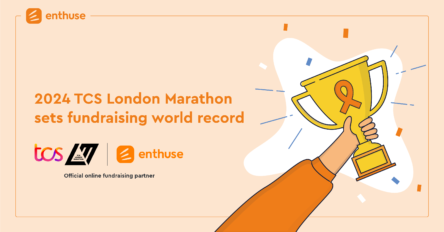
This is the age of digital media, and every organisation these days needs to create a powerful online presence to attract their audience. This applies to charities and NGO every bit as much as commercial companies.
Whether you are running an NGO, a charity or a social enterprise, it is critical that you invest time and effort into developing your website and your marketing campaigns. Your website is like your virtual storefront, the place where the public will engage with you. Email campaigns play an vital role in the online success of any business, company or organisation.
You may well be aware that many organisations in the third sector make use of three popular domain extensions: .ong, .ngo and .org. Of the three, .org is the best known, perhaps due to its open availability, whereas .ong and .ngo require legal verification for access.
History of .org
The domain extension .org was created in 1985, and still remains one of the most popular domain extensions, along with others like .net and .com. Others include .edu and .gov, but these are not openly accessible. In 1992, when charitable organisations started to go online, .org became the domain extension of choice, and this has continued to the present day; there are now around 11 million .orgs registered throughout the world.
What makes .org different from .ong and .ngo?
Although most non-profit organisations tend to choose .org for their domain, this is open to anyone – company or individual – that wants to use it. However, .ong and ngo domains are specific to non-profits, charities, ONGs, and NGOs.
NGO stands for Non-Governmental Organisation; NGOs operate independently and achieve their goals without government involvement. Reports indicate that there are almost 10 million NGOs throughout the world, but most of them are still operating offline.
One recent report on Global NGO Online Technology shows that the term NGO is commonly used and recognised by 31% of people in Europe, 52% in Asia, and 53% in Africa, whereas ONG is at 35% in South America. Other than this, non-profit organisation is used by 79% of North Americans, and it is common among 49% of Australians and Oceanians as well.
Does your choice of domain name affect the success of your online fundraising?
Some recent reports have suggested that people naturally develop more trust in organisations registered with .org. This breaks down to 72% preferring .org, 6% for .ngo, and 7% for .edu. By comparison, .com was seen as trustworthy by 29%, and .net 30%. Websites and email addresses with a country code extension (eg. .au, .uk, .ca) etc have a 13% trust rate. It is therefore logical that trust in the domain name will impact on fundraising success.
How to register a .org or .ngo domain name
The good news is that .ong and .ngo domains are available in the form of bundle packages, in which you will purchase one and receive the other for free. Follow the following two steps to complete the process:
Step 1: The cost of a .ong or .ngo domain name will generally be somewhere between $30 and $50. You will need to purchase your desired domain from a trusted registrar.
Step 2: When you have completed your purchase, you will need to create an account on OnGood.ngo. This will facilitate the verification process. The whole process takes only 5-10 minutes to complete, and once done, it won’t be long before the checks are complete.
How to use .ong and .ngo domains?
- If your organisation prioritises a .org extension, then you will have to setup redirects for .ong and .ngo. You can do this for free with the help of your domain registrar.
- If your organization prioritises .ong and .ngo extensions, then simply pick a launch date and direct your website to the new domain. Update all email signatures and print materials, and set your email addresses to .ngo or .ong.
- .ong and .ngo make ideal URLs for campaign redirects and microsites.
For help with website design, domain selection, effective fundraising and more, visit Enthuse. We can help you to achieve your charity’s goals with a mobile optimised website, which is built and designed with fundraising in mind.









